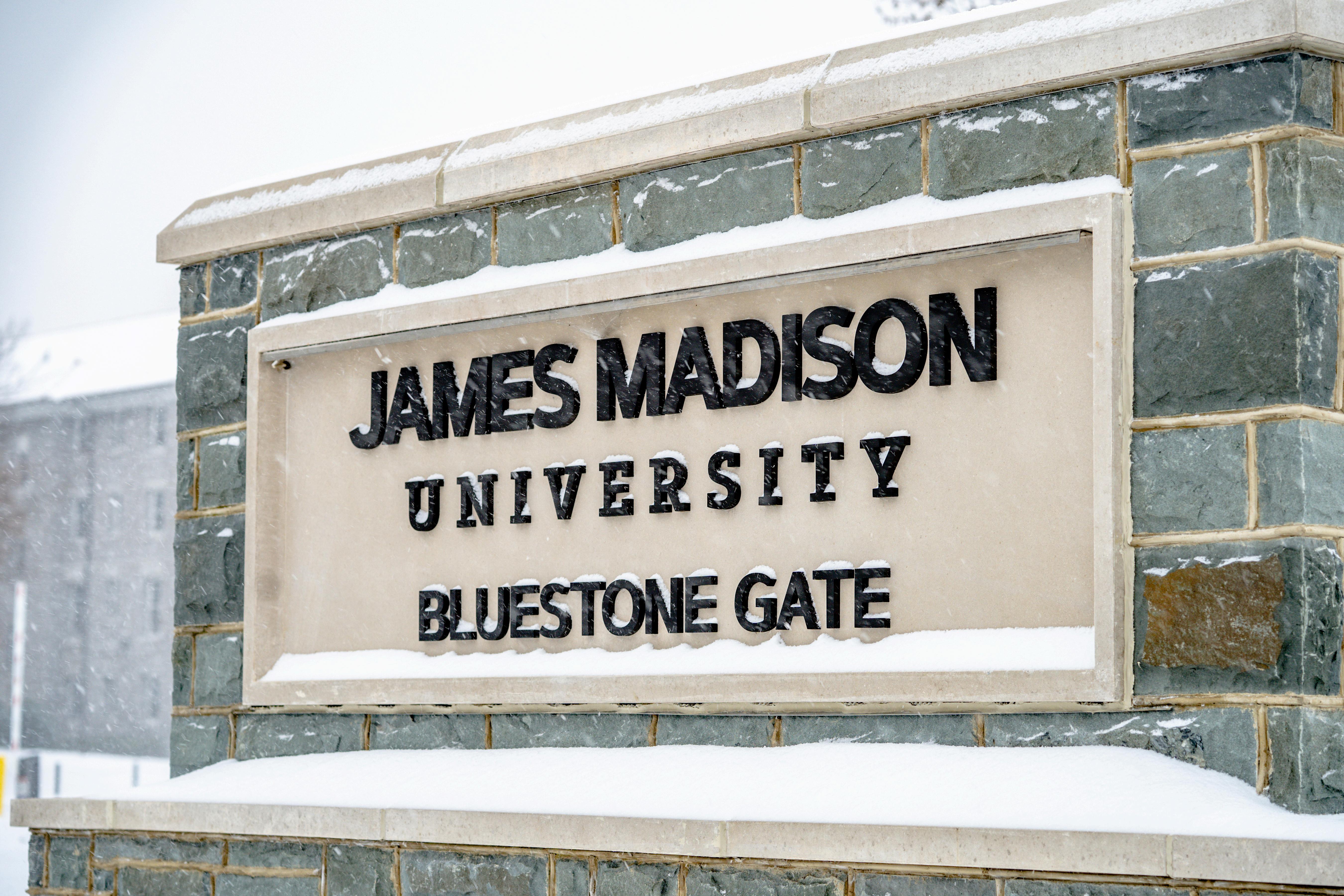

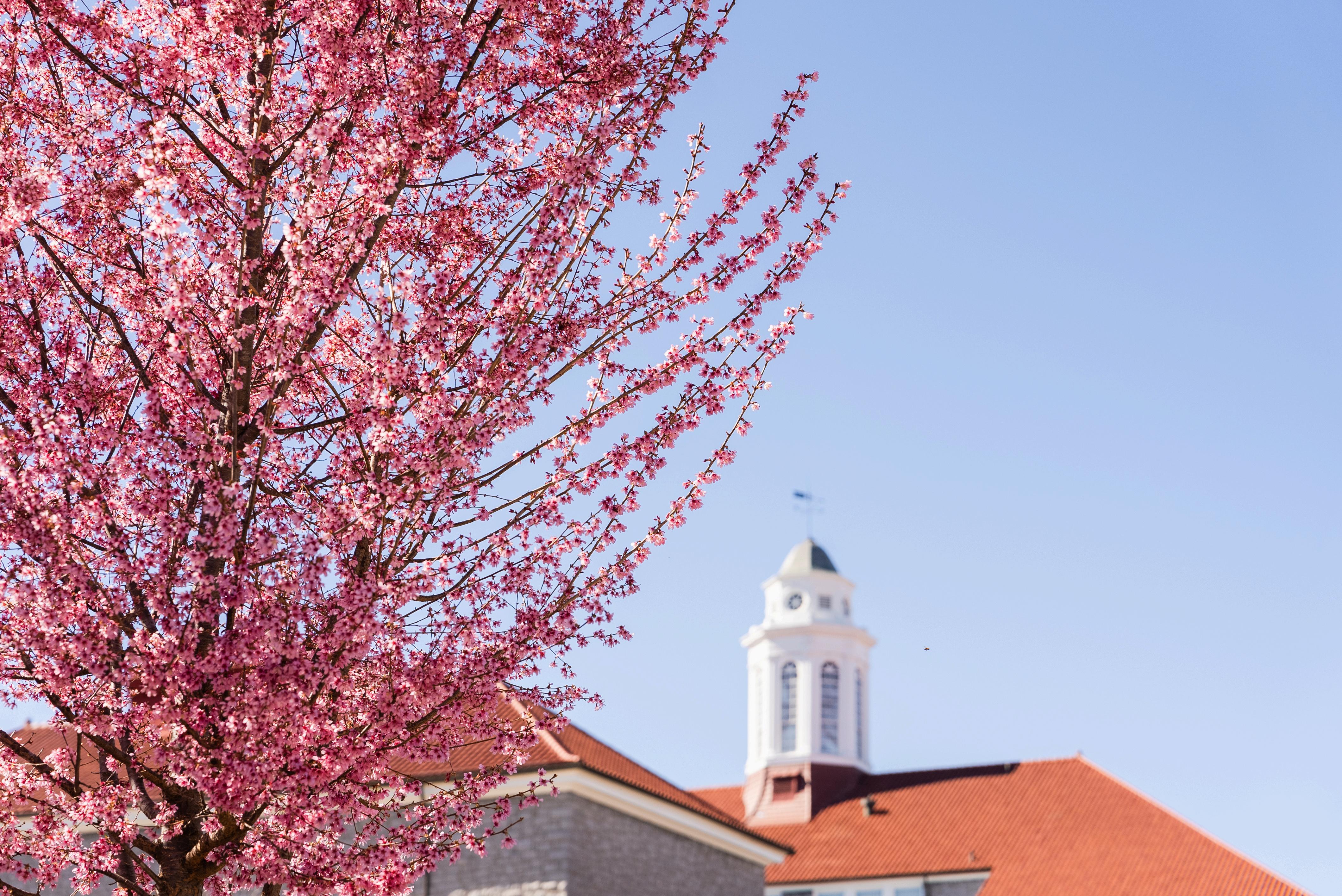




Nikema Bell (‘25M)
Graduate Assistant, Furious Flower Poetry Center
Becca Evans (‘18, ’20M) Communications & Marketing Specialist, College of Arts and Letters
Josette Keelor
Associate Editor, Magazine
Siân White
Associate Dean, Professor of English
Shannon Wilson (‘16M) Director of Professional Development and Engagement, College of Arts and Letters
Traci Zimmerman (‘92, ‘94M) Dean, Professor of Writing, Rhetoric and Technical Communication Madison
Winter often brings with it a complex kind of melancholy. While we endure the cold, gray, dark days that encourage us to retreat and withdraw, we are buoyed by days of sublime beauty: some with dazzling sun, some with snow and the peaceful quiet it brings, and others where we marvel at the way the light goes golden in the late afternoon.
Arts and Letters Review
In this, the sixth issue of the , we highlight the people, the work, and the accomplishments that represent those beautiful days.
And we are reminded of Albert Camus’ words:
In the midst of winter, I found there was, within me, an invincible summer. And that makes me happy. For it says that no matter how hard the world pushes against me, within me, there’s something stronger — something better, pushing right back.
Traci Zimmerman (‘92, ‘94M) Dean, College of Arts and Letters

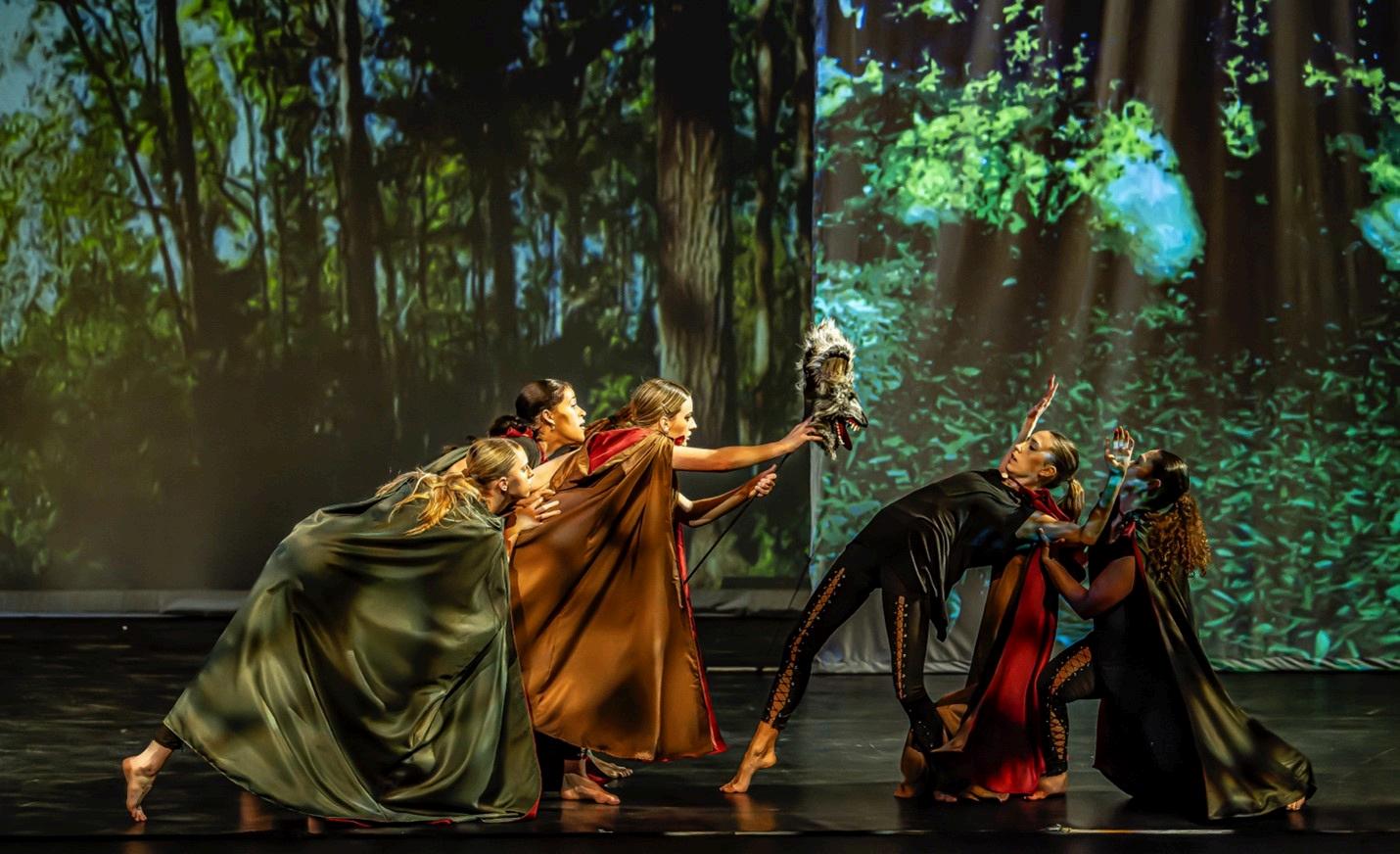
Under the Wolf’s Cloak
In Fall 2024, JMU hosted the premier of an ambitious, interdisciplinary, and multimedia project titled , a rewritten feminist version of “Little Red Riding Hood,” conceived by a team of creative JMU faculty in film, dance, and literature. Associate Professor Imelda O’Reilly (Media Arts and Design), Assistant Professor Tara Lee Burns (Theatre and Dance), Instructor Molly O’Donnell (English), and cinematographer and filmmaker Joe Foley orchestrated a large-scale collaboration among JMU students, faculty, and international artists.
The team used narrative layering to explore feminism and fairytales by developing the project across multiple platforms: a staged theatrical production, a 360° Virtual Reality film, and a 16 X 9-format film, i.e., in the aspect ratio of a full movie theater screen.
After meeting through a Center for Faculty Innovation mentorship program, filmmaker and poet O’Reilly and dance choreographer Burns hatched a plan to collaborate on a multimedia project with Foley, who proposed creating a 360° Virtual Reality art film to screen in JMU’s John C. Wells Planetarium. “I see this medium as an extension of cinema,” Foley says. “It is truly immersive and grounds the viewer in
participatory storytelling while expanding the audience’s imagination.” Associate Professor Geary Albright (Physics and Astronomy) facilitated the screening at the Planetarium, where he serves as director.
The project’s foundational text is O’Reilly’s poem titled “Under the Wolf’s Cloak,” which explores ancestral trauma, the legacy of patriarchy, and the wider community’s culpability; as one refrain goes, “But they knew, they all knew.” O’Donnell, inspired by Angela Carter’s , scripted a response to the poem that uses the “well-trod ground” of the fairytale to consider what feminism means now. O’Reilly then edited O’Donnell’s script to form a Greek Chorus sung and recorded by the South America-based Macrófona choir.
The Bloody Chamber
Burns, meanwhile, enjoyed the challenge of choreographing for a new medium and perspective. The 26 student dancers collectively acted as the Wolf, Little Red, her grandmother, the villagers, and the woods, at times embodying a single entity together and, at others, playing discrete roles. They followed a structured “cloakography” to enable their reversible costumes, red on one side and either brown or green on the other, to evoke the many parts.
For the choreography, Burns “visualized a kaleidoscope, where the dancers were creating shapes and imagery in full circle. In one section, the dancers used the same 10 words in different orders to create unique movements that came from the text.” A recording of O’Reilly reading the poem — set to original music by composer Gene Pritsker — played during the performance, inviting the audience to watch and listen simultaneously to the overlapping yet distinct art forms.
These elements were part of both the film and stage versions, but the experiences of orchestrating and performing in those contexts were radically different. The camera used to create the hypnotic, transcendent experience of the 360° VR film, for example, is volleyball-sized with six cameras inside. Unlike on a traditional stage, the performers had to direct the action around the circumference of the ball.
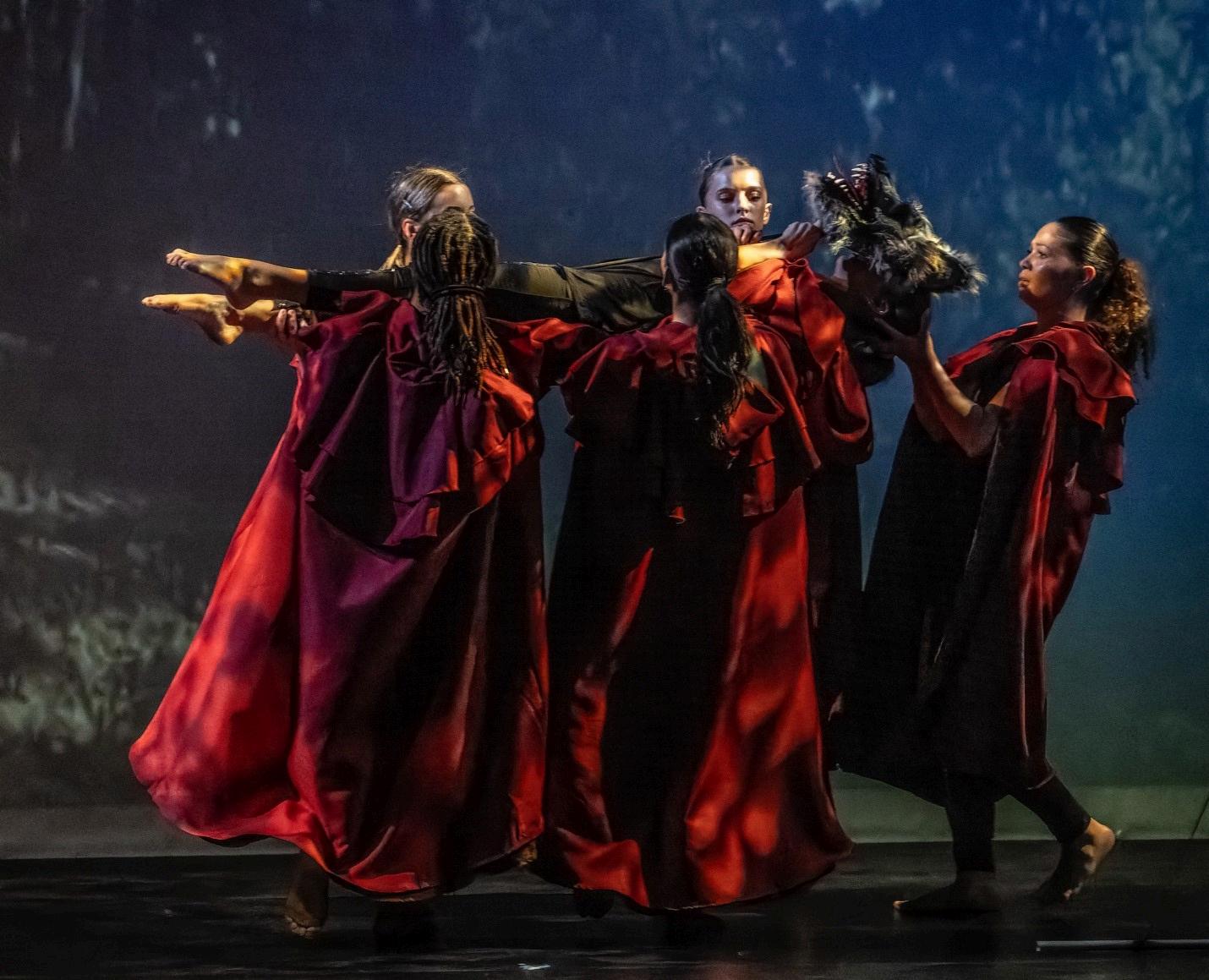
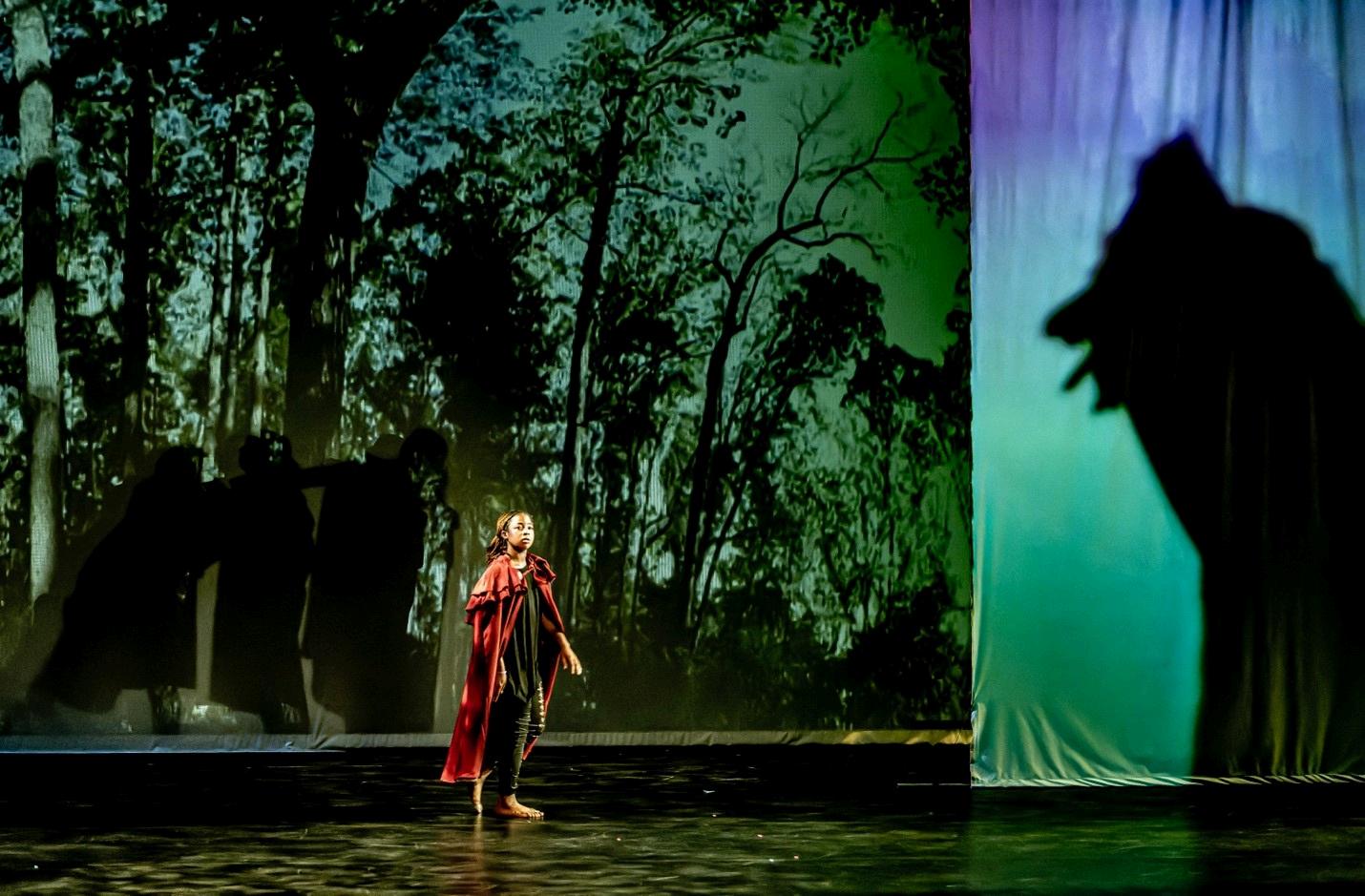
One dancer, Mackenzie Seifert (‘25), said, “Getting to work with the 360° camera was such a cool and unique opportunity unlike anything I have everdone before. Having no offstage or backstage and being fully visible to the ‘audience’ always was a challenge I had to work through.” For the September screenings in the Planetarium, student performers saw their work projected onto the dome and participated in a Q&A with other students and faculty.
With funding from the Virginia Repertory Dance Company, the team then adapted and developed the project into a production they performed in November 2024 at the Forbes Center for the Performing Arts. Involving students at every turn, O'Reilly tasked students in her Producing and Directing course with filming the staged version. The production culminated in a theatrical release, accompanied by live narration and music by Composers Concordance, in Manhattan at Westbeth Artists Community, the world’s largest artists’ housing community where O’Reilly is a resident.
The scale of the project’s production and reach is difficult to fathom. The multidisciplinary JMU team relied on the expertise of a network of renowned professionals beyond JMU — composers, musicians, costume designers, film editors, and technicians — and benefited from collaboration and support across JMU and the Harrisonburg community.
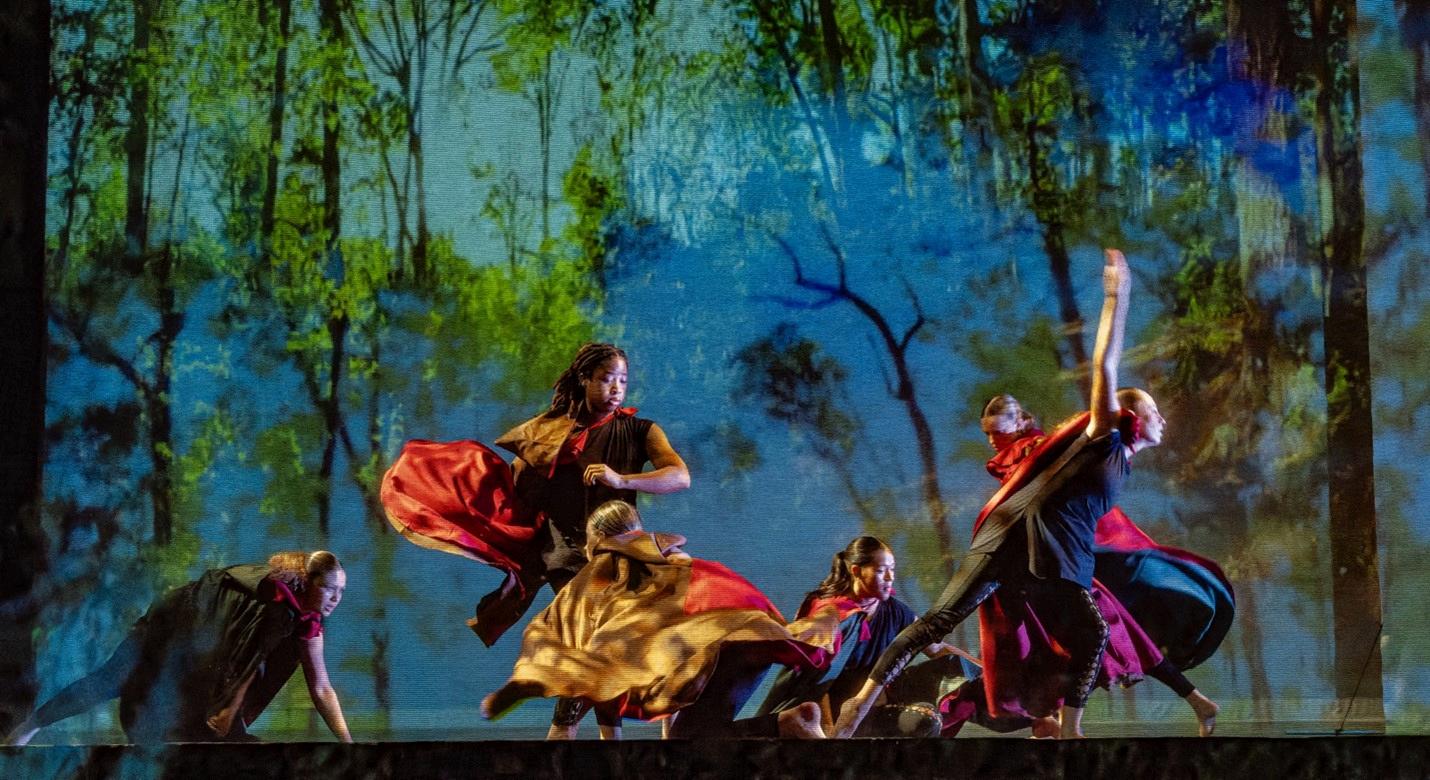
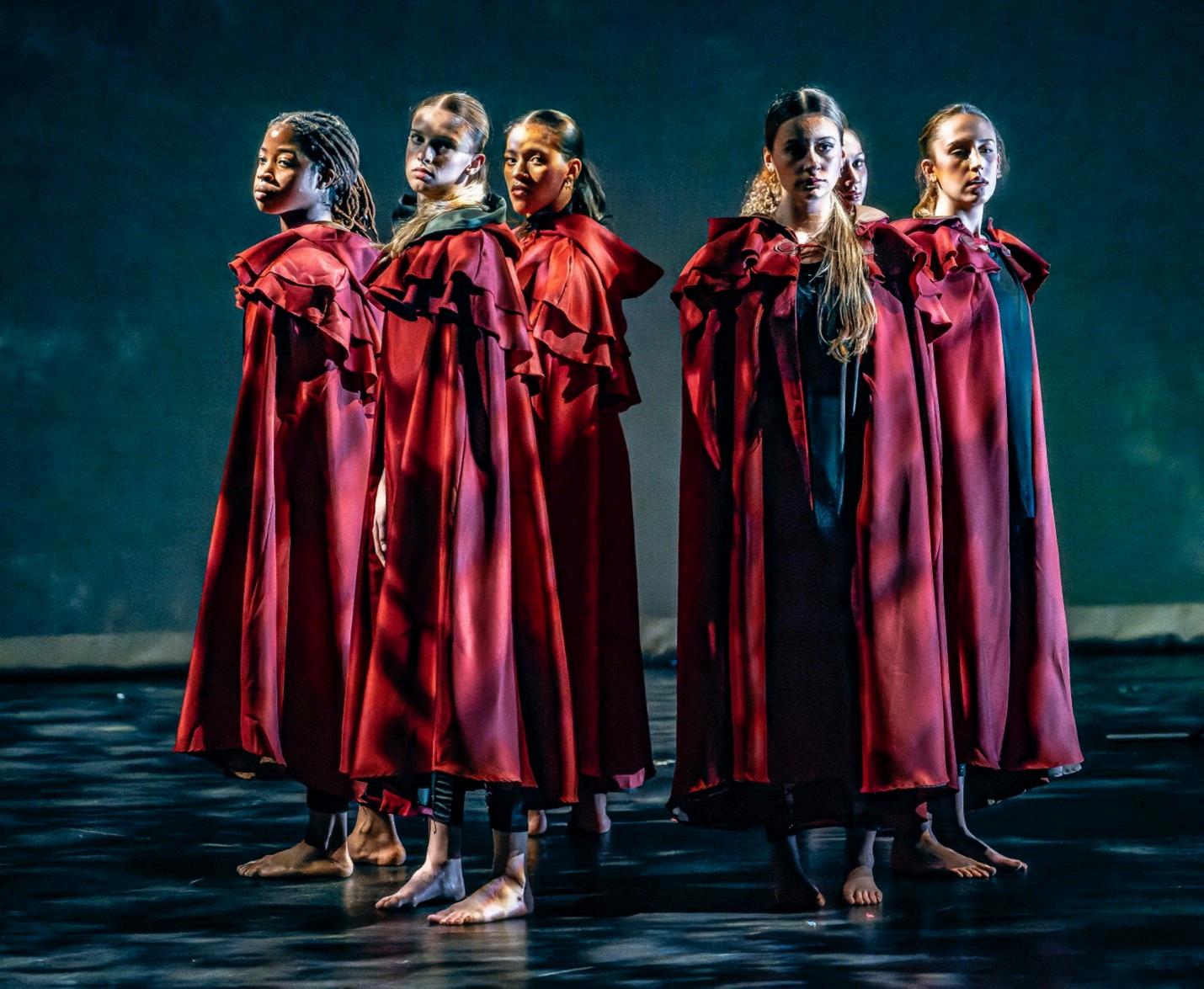
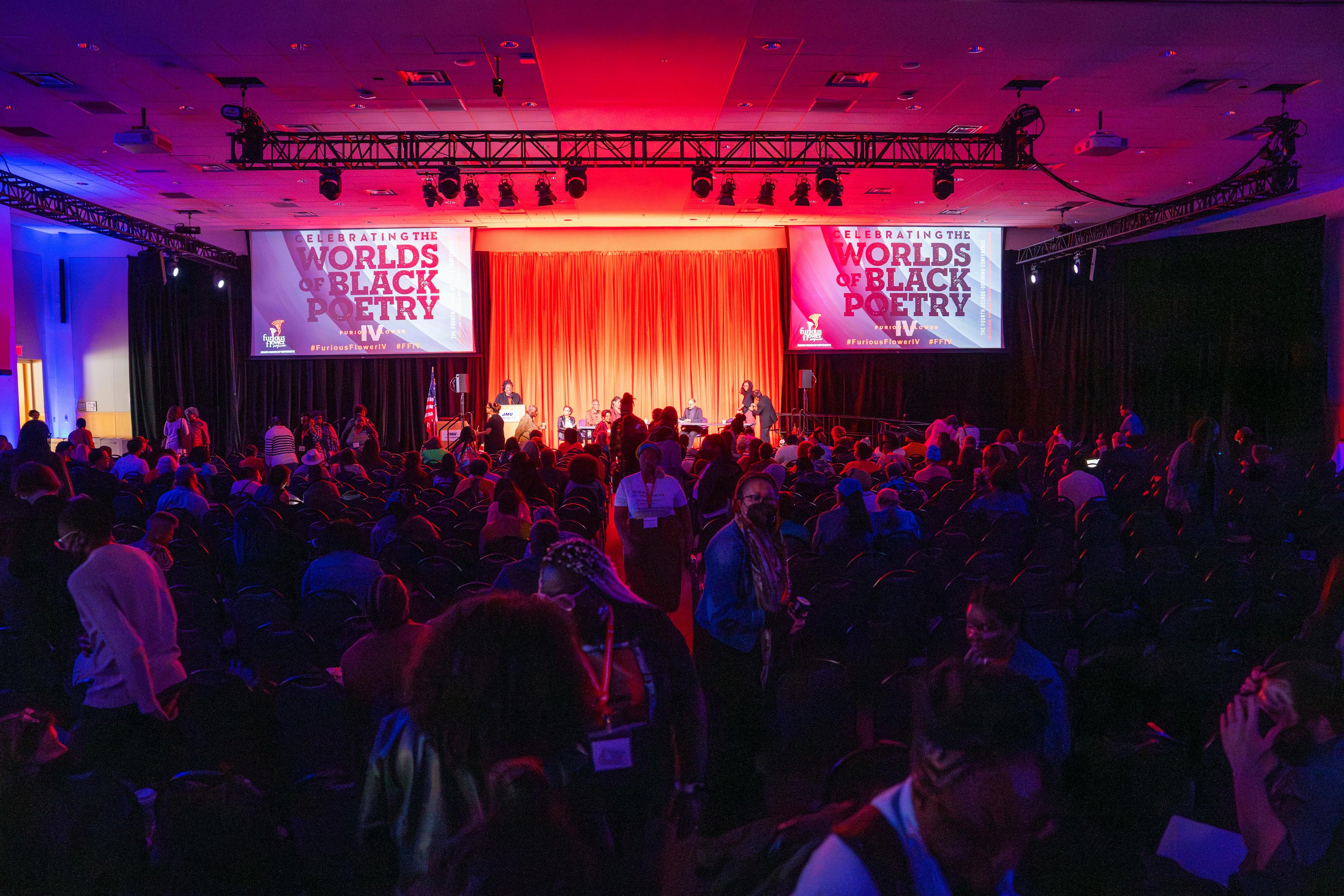
By Nikema Bell (‘25M)
The fourth-ever Furious Flower Poetry Conference, held once a decade, was like a slowcooked meal — rich and deeply nourishing. Led by executive director Lauren K. Alleyne and her team, and sponsored by the Mellon Foundation, Amazon Literary Partnership, and multiple JMU partners, the event took place at James Madison University in Harrisonburg, Virginia this past September under the theme “The Worlds of Black Poetry.”
Since its inaugural conference in 1994, when Joanne Gabbin brought together thirty eminent poets to honor American poet and writer Gwendolyn Brooks, the Furious Flower Poetry Center has grown into a cornerstone of Black poetic culture. Now a decennial celebration, the gathering takes a reflective view of Black poetics, highlighting the shifts and continuities in the tradition across generations. The 2024 conference marked another momentous chapter in this ongoing story by highlighting Black global and diasporic poets and poetry.
Furious Flower IV paid tribute to two towering figures in the field: Elizabeth Alexander and Kwame Dawes. Their contributions to the Black
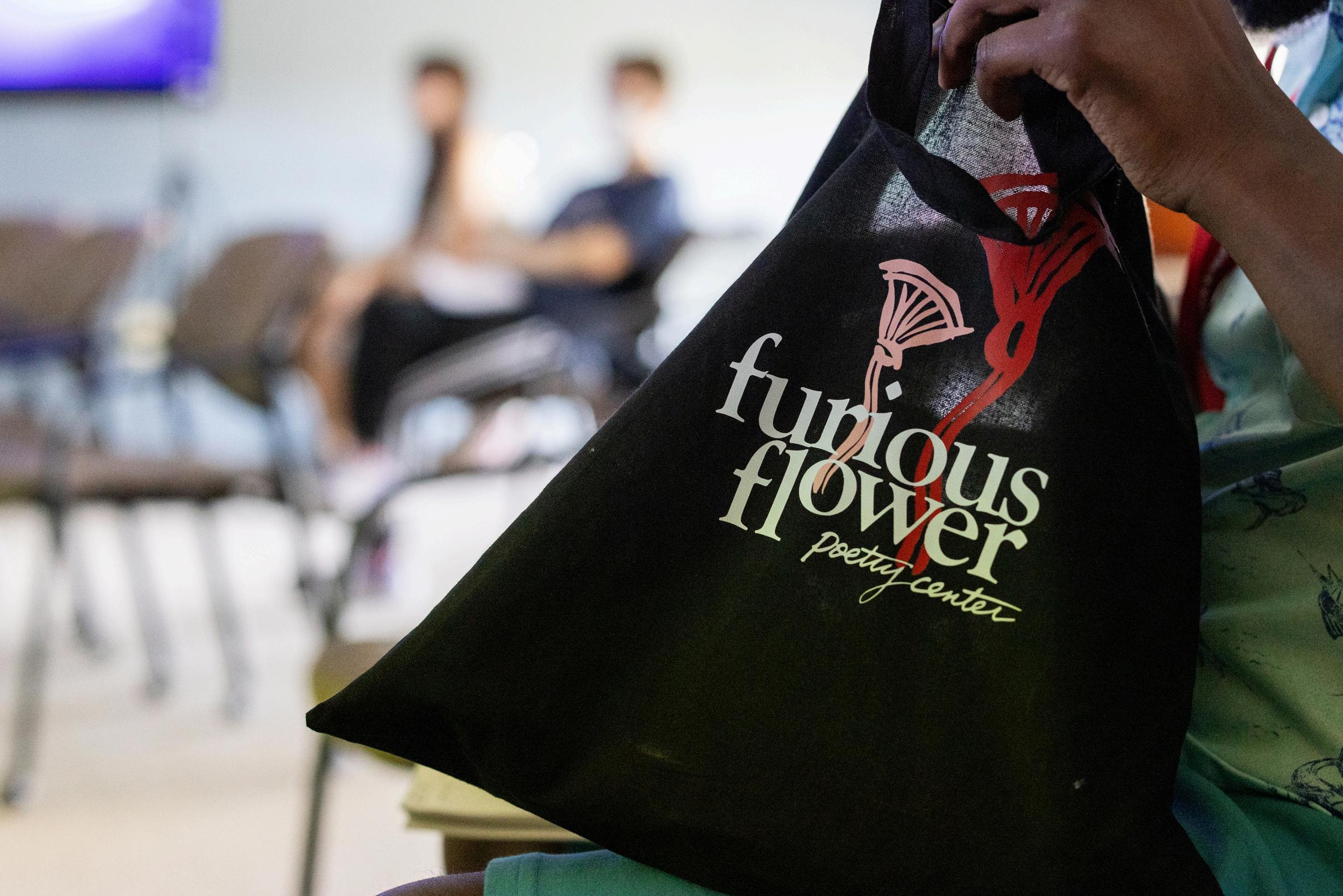
poetic canon and to the cultivation of younger voices set the tone for the event’s intergenerational and international ethos. The Lifetime Achievement Award ceremony on the first night of the conference honored the achievements of Alexander, Dawes, and eight other poets: Cornelius Eady, Nikky Finney, Lorna Goodison, Niyi Osundare, Tim Seibles, Patricia Smith, Harryette Mullen, and Ethelbert Miller. The honorees emphasized that Black poetry is a shared inheritance — a continuum of voices that thrive in dialogue with one another.
That inheritance was on full display at the conference which featured a total of 50 poets. The four “Black Universe” readings included luminaries like MacArthur “Genius” award winners Jericho Brown and Terrance Hayes; former U.S. and Virginia Poet Laureate Rita Dove; and renowned international poets Niyi Osundare (Nigeria), Patricia Jabbeh Wesley (Liberia), and Merle Collins (Grenada). , a two-part virtual showcase, featured 13 global Black poets from 10 different countries.
The conference’s more than 70 concurrent sessions provided a space where scholars explored innovative topics related to Black poetry, examining its global dimensions and various facets. At the “Seeds and Stars” open mic sessions, both emerging and seasoned poets took the stage, sharing their work in an atmosphere brimming with camaraderie and inspiration.
In addition to the abundant poetry readings and scholarly panels, the conference hosted gallery exhibitions and performances. Each
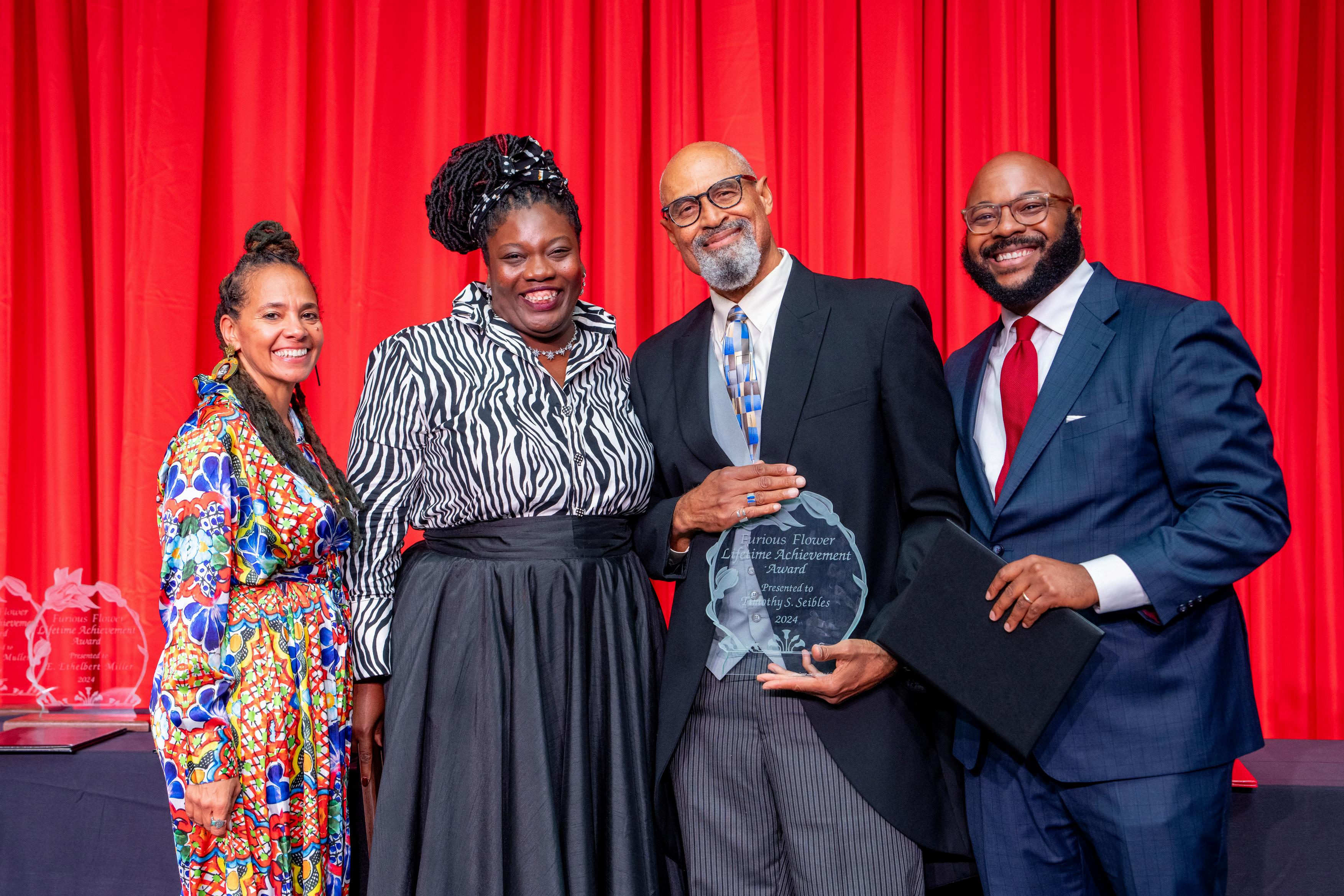
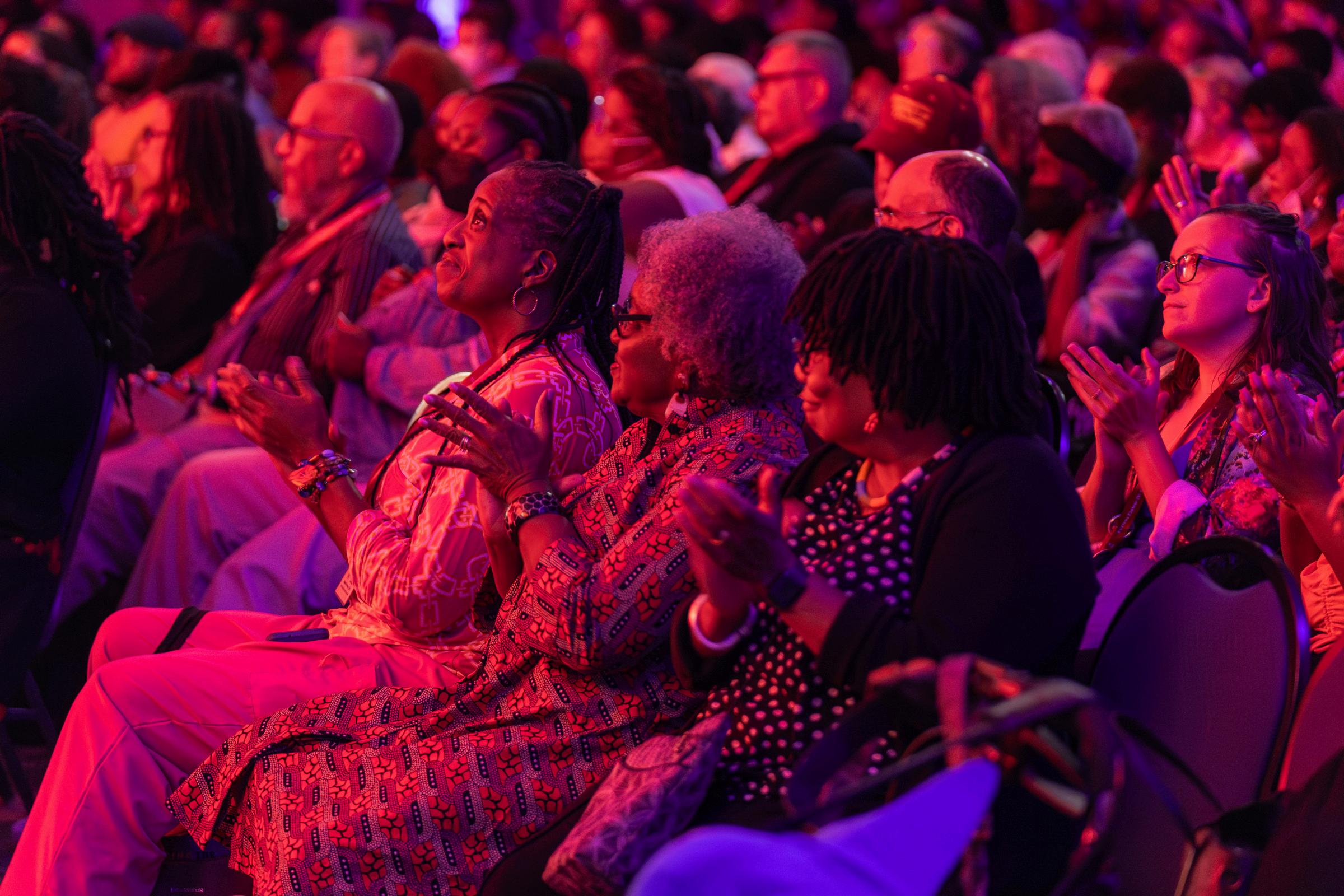
element explored the intersections of identity, history, and artistic expression. The Lisanby Museum’s exhibit , sponsored by the Art Bridges Foundation, featured internationally renowned Black artists including Mickalene Thomas, David Hammons, and Senga Nengudi. The broadside exhibit, curated by Furious Flower graduate assistants Haylee Chase Edwards and Nikema Bell, showcased “the work of diasporic poets who recollect and reassemble the hurt, connect with the histories that have been dispersed, and initiate cultural healing.”
Worlds Within and Without: An Exhibition of Contemporary Black Art
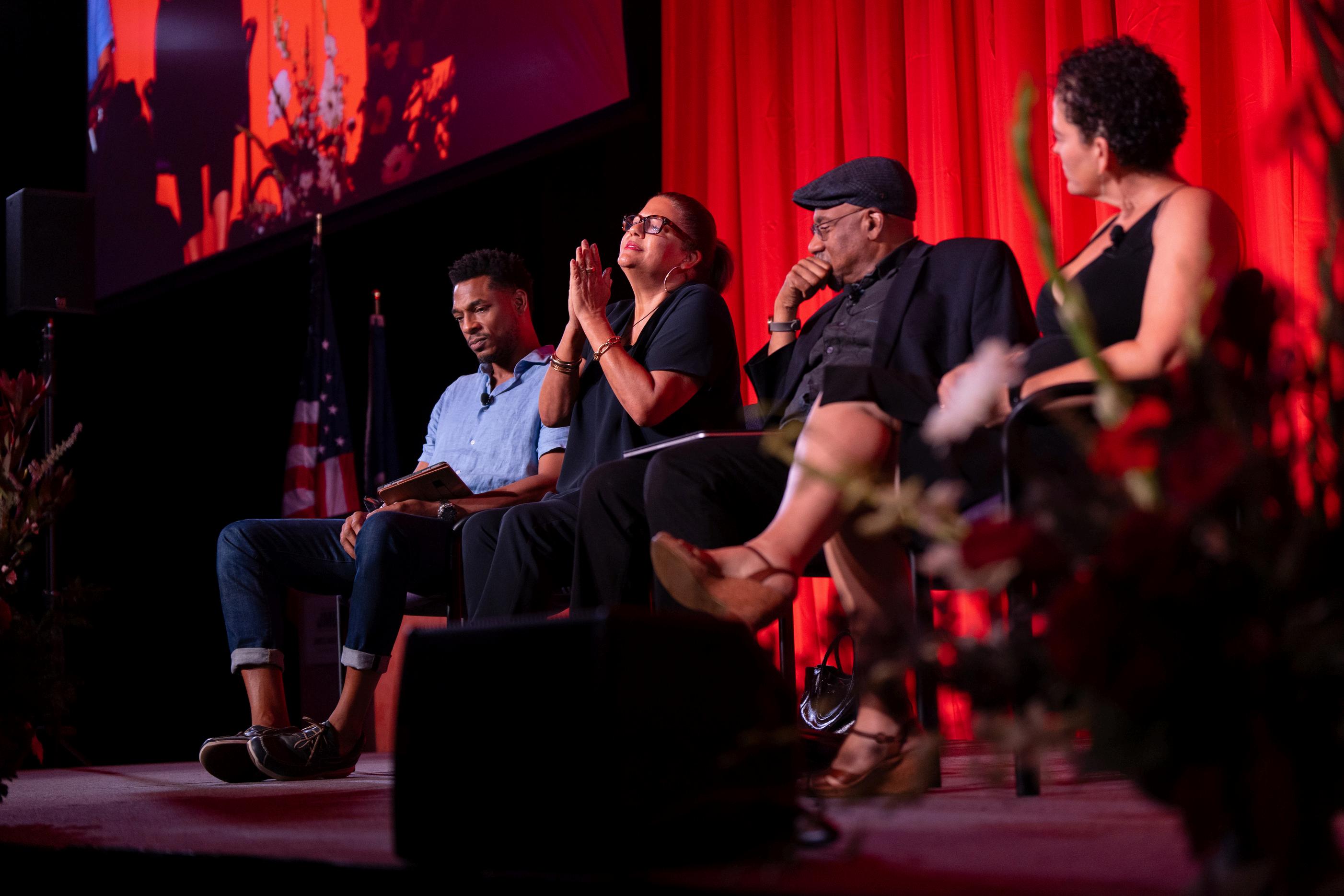
Minia Biabiany’s (Water from the Roots) exhibit at Duke Gallery extended this theme into environmental activism, using hanging installations and informational videos to connect the legacies of colonialism with urgent ecological crises. Country music singersongwriter Britteny Spencer closed the conference with a concert at JMU’s Forbes Center. These performances and visual art installations, in conversation with the poetry, showed how Black creativity flows across media, generating dialogues about justice, memory, and possibility. The impact of the conference is felt both locally and around the world. The more than 700 conference participants included attendees from around the country, as well as from a variety of international locations, including England, Poland, Australia, Jamaica, and Canada. They also included over 300 JMU faculty, staff, and students. In the conference’s opening session, CAL Dean Traci Zimmerman shared her
experience while a graduate student attending the first Furious Flower Poetry Conference in 1994 as marking a turning point in her educational and career trajectory. She noted JMU’s fortune in being home to such a vital cultural and interdisciplinary institution.
Furious Flower IV was not just a celebratory gathering; it was also a reminder that Black poetry is more ecosystem than monolith, its intersecting microworlds each enduringly vital. The scholarship, art, and poetry shared at the conference will continue to shape dialogues about Black literature and culture for years to come. That rich blend of legacy, innovation, and communal joy is the foundation for the Furious Flower Poetry Center and its decennial events. With great anticipation, we look forward to the 2034 gathering, which, like a great meal, will be worth the wait.
To experience moments of the conference, visit the Furious Flower YouTube channel, and listen to our Furious Flower IV podcast available on Soundcloud and Apple Podcasts.
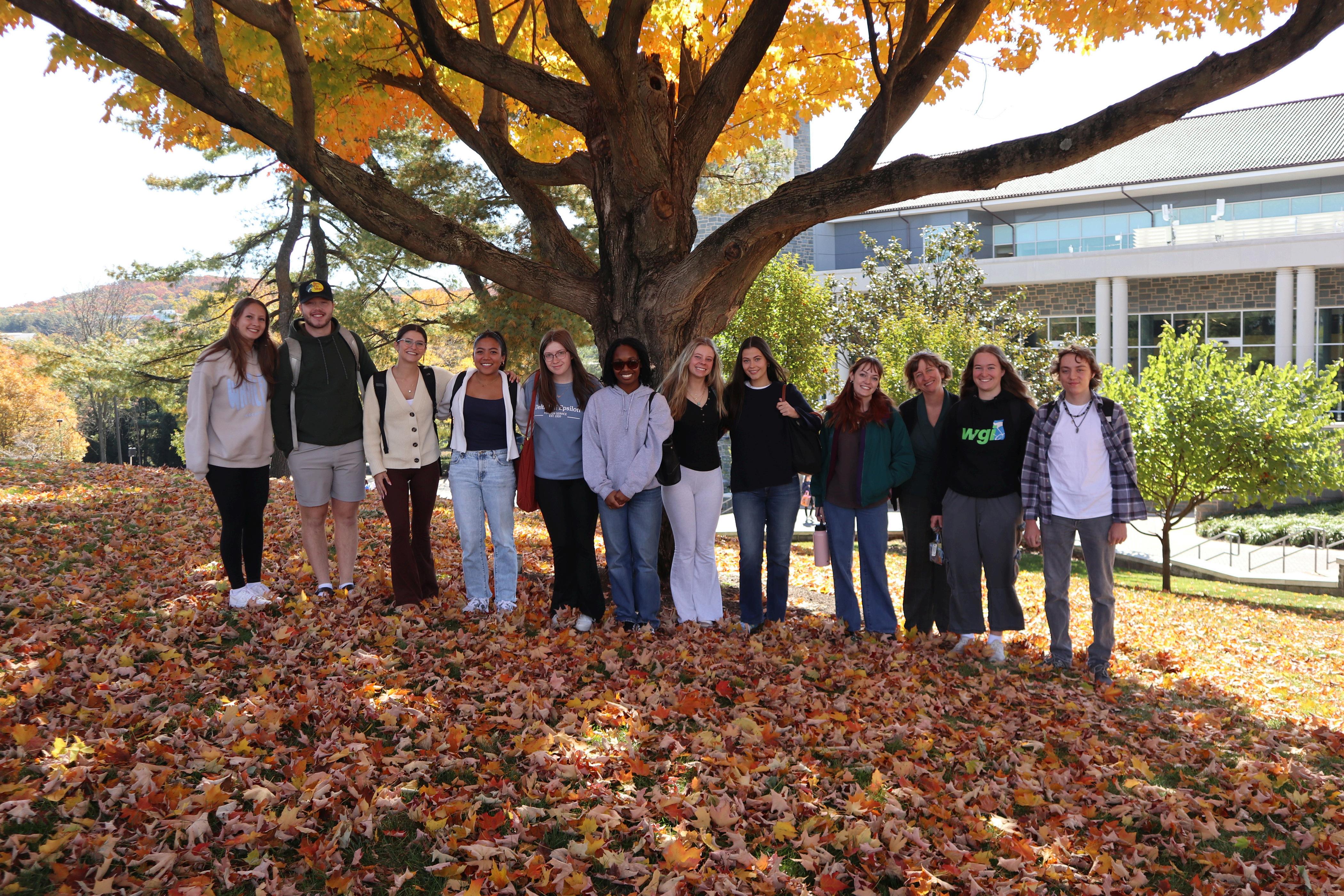
Each year, thousands of individuals are forced to flee their homeland due to violence, war, persecution, extreme poverty, or environmental devastation. Many are internally displaced while others make it to camps and cities in neighboring countries to await permanent resettlement under the guidelines of the United Nations High Commission of Refugees. Harrisonburg, Virginia is one of hundreds of U.S. cities identified as “refugee resettlement” areas, presenting JMU with a unique opportunity to shape public discourse around immigrants and refugees.
In 2023, JMU was designated a chapter of Every Campus a Refuge (ECAR), an initiative that mobilizes college and university campus resources to provide refugees with needed housing and other forms of assistance. For the last three summers, JMU administrators and faculty have worked alongside community leaders and local organizations to help families resettle in the Shenandoah Valley, hosting refugee families on campus.
Students were not involved in establishing the JMU chapter, but were brought on board this past fall when Lisa Porter, Associate Professor of Sociology, created a course based around ECAR with support from a CAL course development grant. For Porter, “the class provides a space for students to learn about key global processes that contribute to forced displacement and immigration while actively shaping the future of JMU’s ECAR chapter.” Many of the students who enrolled in the class had never heard of ECAR, but they took to the work with zeal.
Students divided into on-campus and community-based teams, both coordinating with a local resettlement office called Church World Services (CWS). The campus team was
responsible for increasing student and community awareness about ECAR. They established an official student organization; promoted the program through flyers, , social media, and tables at student organization events; and even represented JMU at the national ECAR gathering in Ithaca, NY.
Their biggest project included planning and coordinating a donation campaign event, the Fall ECAR drive, where various student organizations competed to raise funds for the local non-profit Village to Village, which assists CWS with furnishing residences. JMU’s Honors College hosted a central donation spot, and the class collected winter and fall clothing as well as cleaning and household supplies.
“As we moved into the colder parts of the year, we tried to soften the landing for people who are new to the U.S. and Harrisonburg,” said Abby Horace (‘26).
The off-campus team underwent various mini-trainings as English Language Learner tutors before completing 20-plus hours in the field tutoring children under the guidance of CWS. For Abigeal Cronan (‘24), “It's really fun tutoring, seeing the kids’ enthusiasm and thirst for knowledge. There's a lot of misinformation and misconceptions about what immigrants are like and this class has been incredibly eyeopening into what the reality is.”
Porter's students appreciated the class format because it combined academic views and approaches to immigration with service-oriented work outside the classroom. “You can read every article, but until you experience it, you just don't know exactly what they go through,” added Adin Skrilof (‘25). “You don’t see the hard work they put in until you witness both sides of the cultural divide.”
Over the last several years, Madison Historians — a student organization founded in 1998 and made up of history enthusiasts from majors across campus — has established an entirely fun-and-games tradition: a rousing competition of “Faculty vs. Student” Jeopardy held once a semester.
Why Jeopardy? Its model relies on both accurate memories and quick hands, giving no team an advantage. It’s a lighthearted battle between students and their professors with trivia categories stretching across the globe and back to antiquity. This fall’s competition included “Innovations,” “East Asia,” “Art and Architecture,” and “JMU/Madison Historian Alumni & Faculty” categories. The student team claimed victory for both Spring and Fall 2024 and look to keep their crown in the new year.
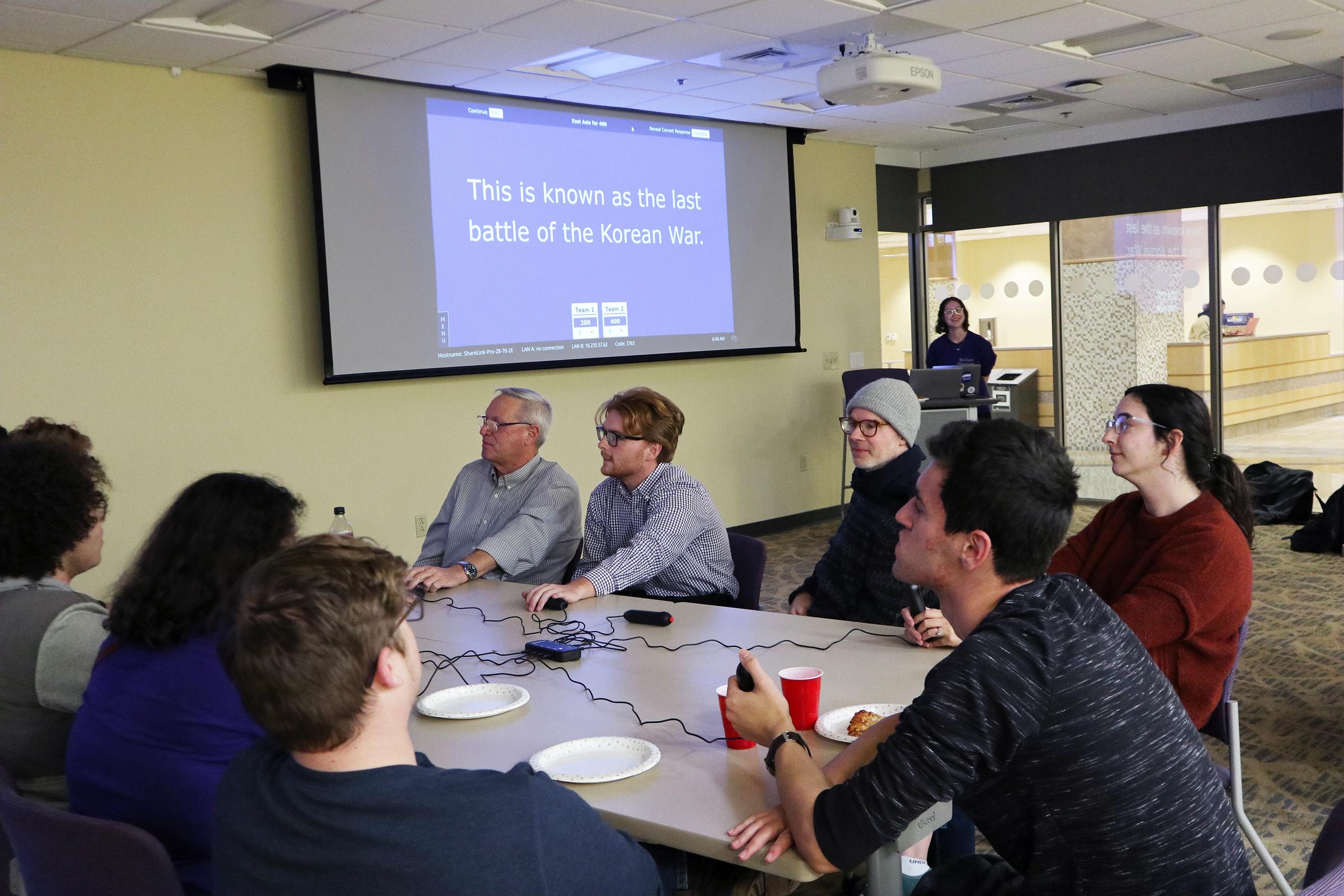
Madison Historians meet weekly to hear presentations from club members or faculty, celebrate historical events, and play other history-related games. One recent faculty presentation marked Women's History Month by addressing women in pop culture. The club also hosts field trips to visit historical sites, such as Mount Vernon, or conduct archeological work at Montpelier.
This semester, the group is collaborating with the President’s office and several student organizations to throw a birthday party for James Madison. They are also designing a research paper workshop to help students explore their own ideas without the stress of a classroom or semester due dates. Clearly, Madison Historians have built a thriving community centered on a shared love of history.
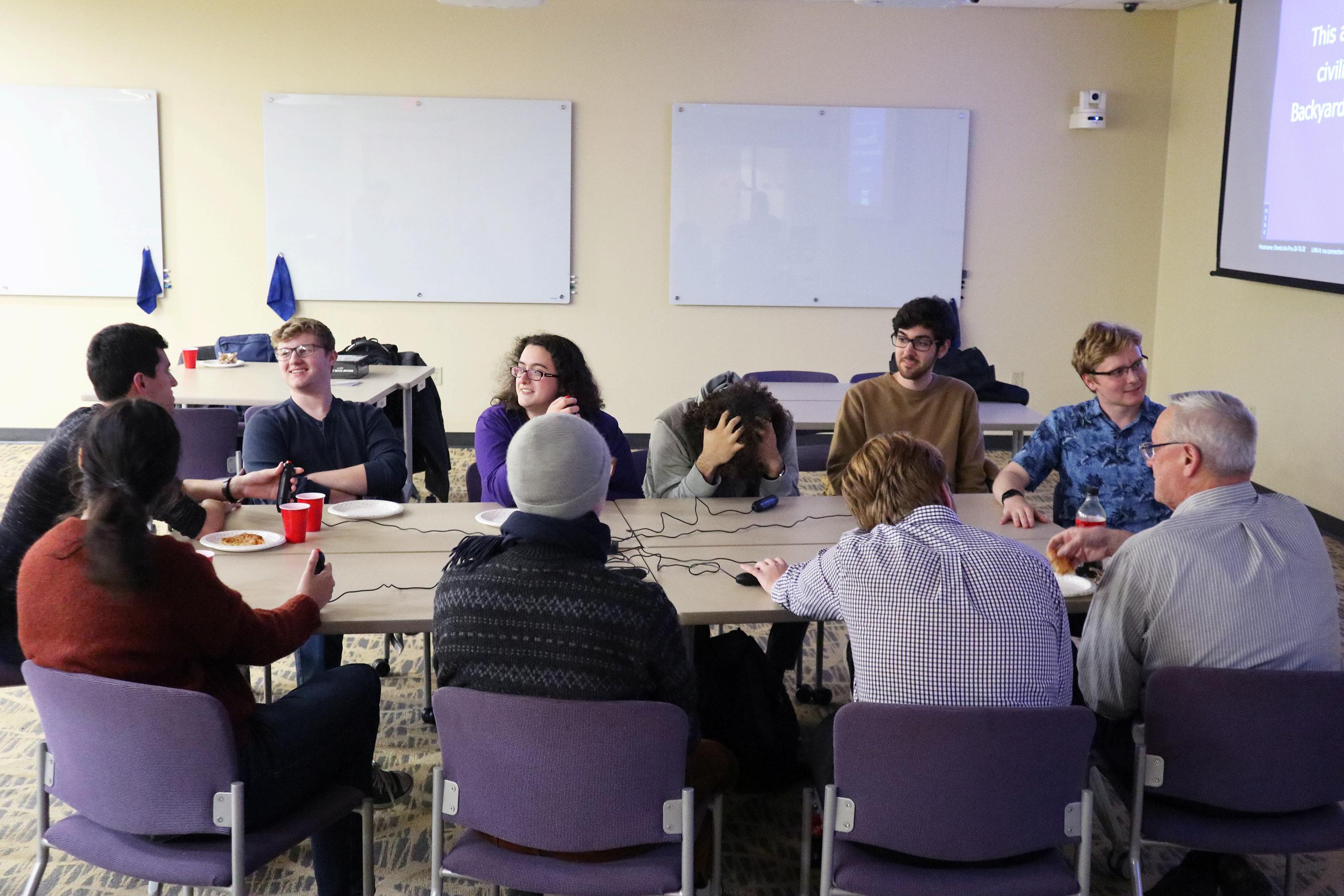
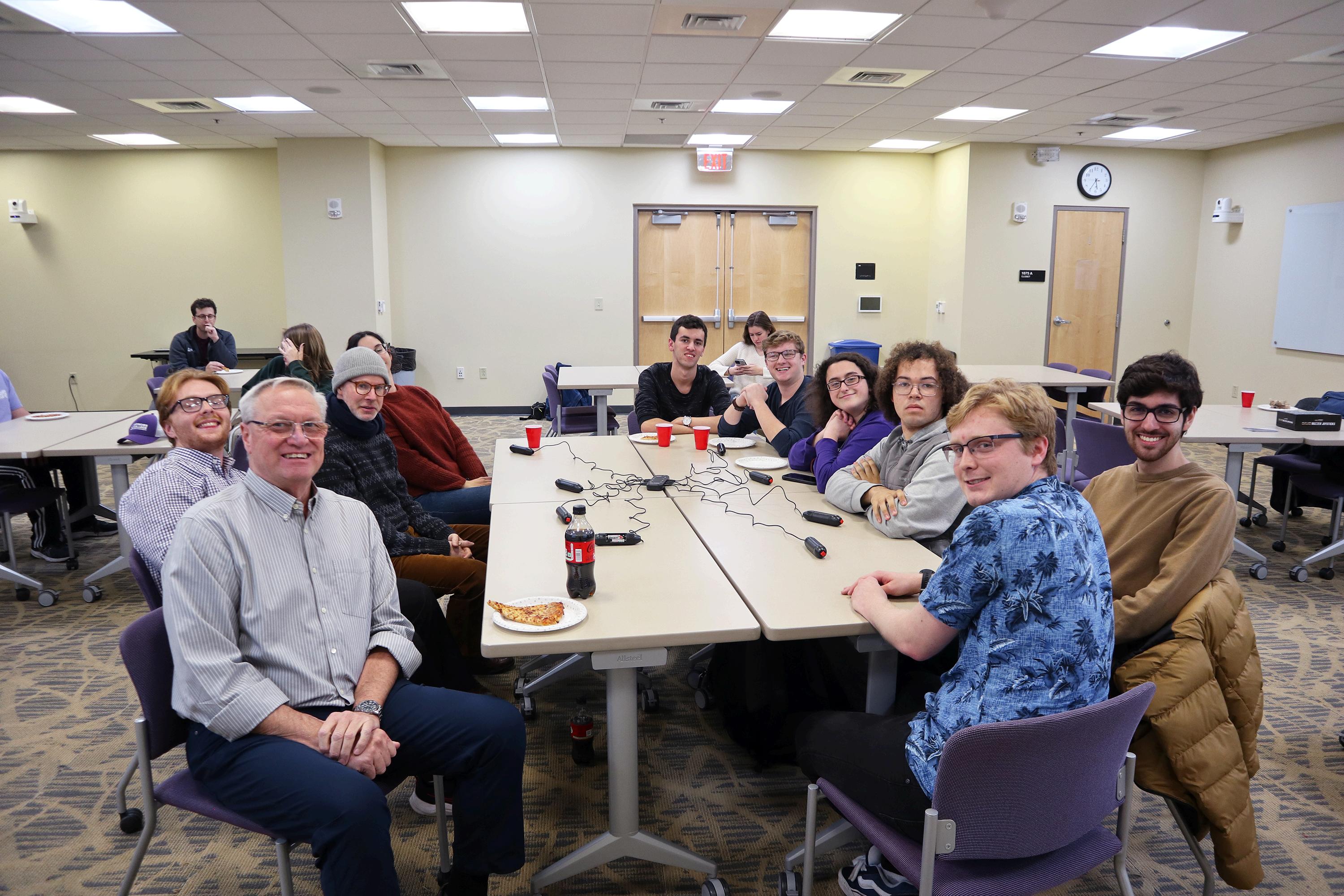
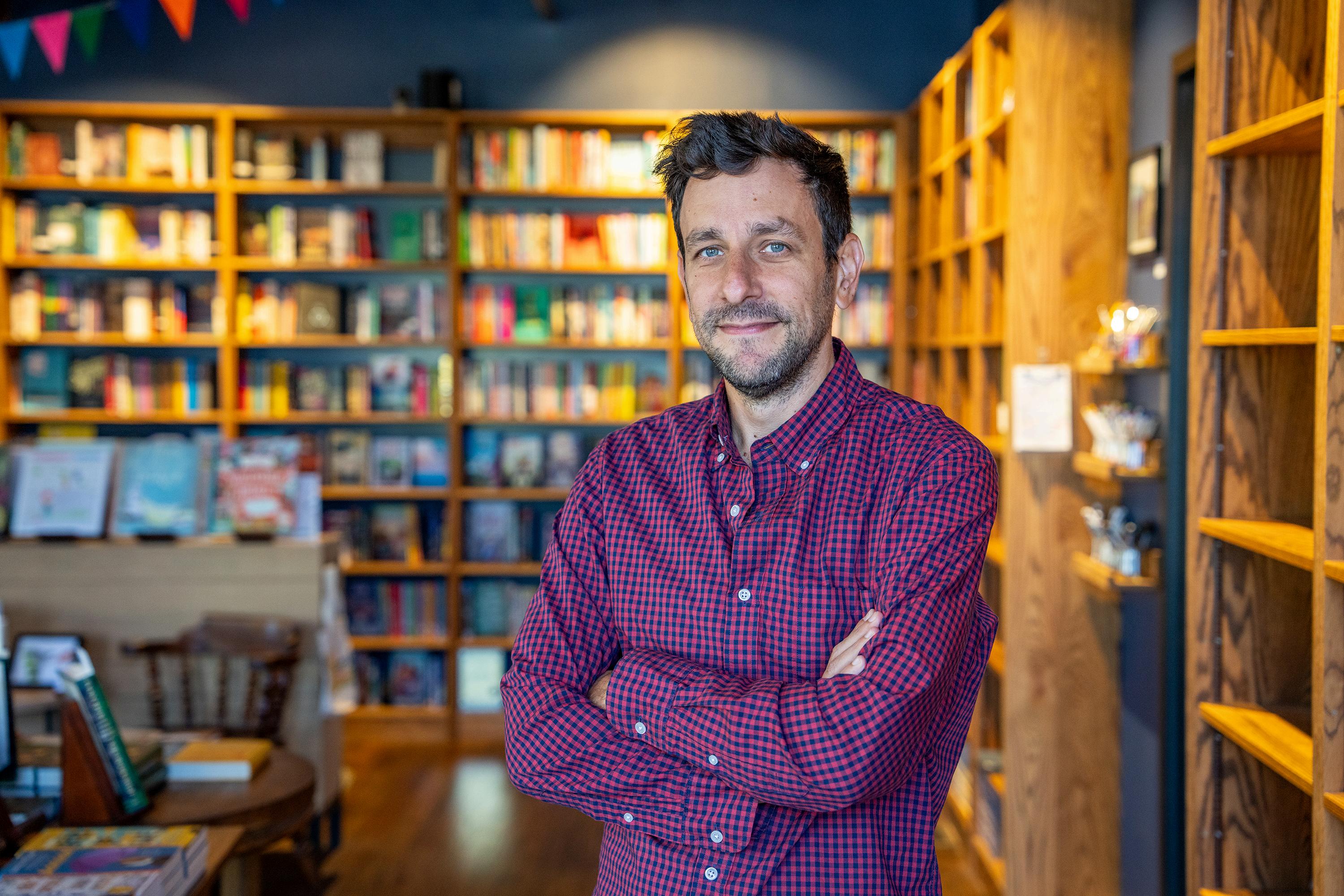
By Josette Keeler
This article was originally published on September 13th, 2024 in JMU News and was edited for this publication.
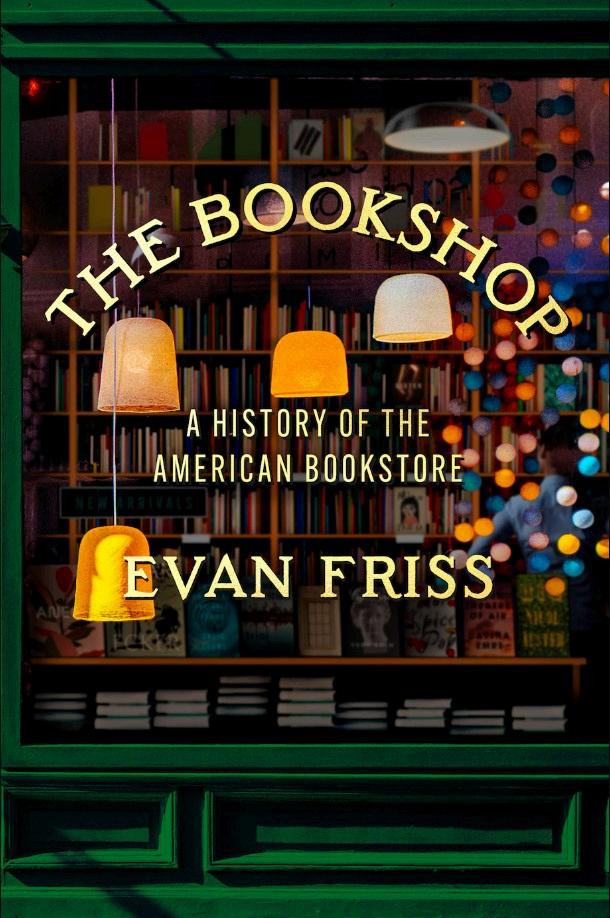
The New York Times
When history professor Evan Friss set out to study the storied history of bookstores, he never dreamed it would land him on Best Sellers list. “It’s been very rewarding, and surprising and overwhelming,” Friss said.
The Bookshop: A History of the American Bookstore
was published last summer by Viking under the Penguin Random House umbrella. It’s being printed at Lakeside Book Company in Harrisonburg.
“My hopes have already been far exceeded,” Friss said. “I felt like it was a win when I got an agent. I felt like it was a win when I got a contract with Viking. So, Best Sellers list feels like a lifetime achievement — and my publisher tells me it is.” The book has since appeared on “Best Books of 2024” lists in both and
The New York Times
Time The New Yorker.
Friss hopes his book will help readers “develop or further their appreciation for how valuable bookstores have been and can be to American culture and life.”
A professor at JMU for 12 years, Friss teaches graduate and undergraduate courses in American history, including a bookselling oral history-project class, where students produce
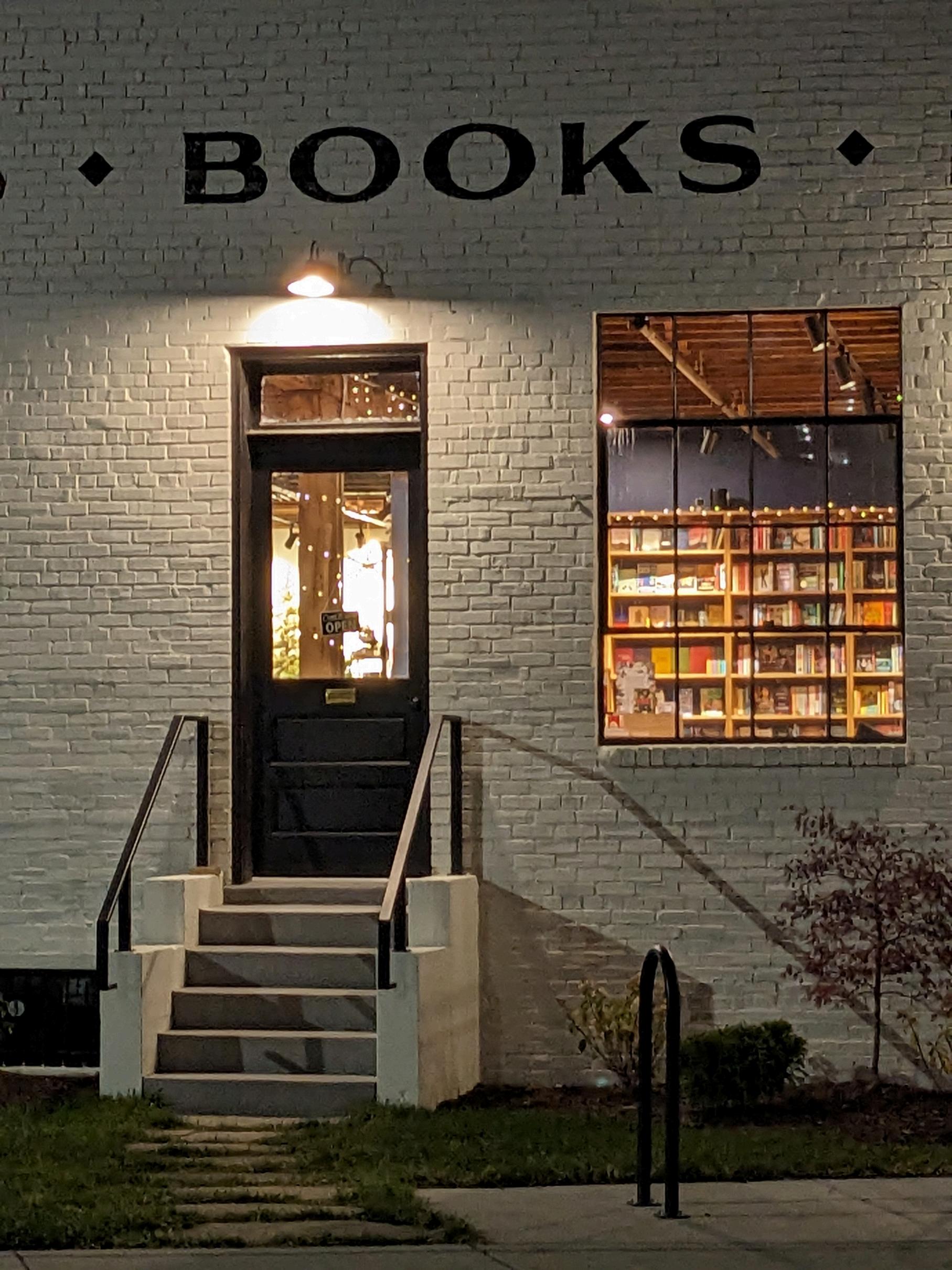
and embed interviews about U.S. bookstores onto an interactive map. A new course, The History of Today, gives historical grounding to public conversations taking place now. “We read news stories, and historicize and contextualize them,” he says, trying to “[uncover] the origins of some of these highly contentious and important current issues.” The course includes a session on book banning.
Bookstores also have a vast history that people might not know about. “One surprising thing was how close to death bookstores have always been,” Friss said. “There’s this kind of perpetual doom-and-gloom about the business, and some of it’s for good reason. It’s a very hard business to be in.”
Booksellers face low profit margins and the threat of online stores offering similar items at discounted prices. Despite fears in the early 2000s that e-books and e-commerce would put bookstores out of business, Friss said bookstores have persisted. “I think there’s more optimism now than there probably has been in the last 20 or 30 years that they can survive,” he said. Having previously written for academic presses, Friss said his latest book was a risky and
unlikely endeavor. “I was an avid reader but never really hung out at bookstores,” he said. That all changed when he was attending graduate school at New York University and would visit his now wife, Amanda, where she worked at Three Lives & Company bookstore in the West Village of Manhattan. Now she owns Parentheses Books in Harrisonburg. “That experience planted the seed,” Friss said. As Amanda talked about her customers, he recalled, “I got a sense of how important these spaces could be for a segment of the population.”
After publishing academic writing about how the popularity of using bicycles for transportation transformed American cities, he decided to write this comprehensive history of the American bookstore. “As a historian,” Friss said, “I began asking questions like, ‘How do bookstores change over time, and why did so many of them disappear over the course of my lifetime? What were they first like? What different models have booksellers used, and how has marketing changed — and publishing?’”
In an era defined by digital screens, Friss thinks people seek out bookstores not only for books but also for refuge. “There’s a sort of sigh of relief that people have when walking into an actual bookstore and picking up an actual book,” Friss said. “[These days] everybody feels like their attention span is slipping away, and we have to sort of retrain our brains. And dedicated, close reading, I think, is a great way to do that.”
As with bookstores themselves, Friss’ book has captured readers’ imaginations, surpassing expectations. In a single week, the book reached No. 9 among hardcover, nonfiction books on the NYT list and No. 5 on the Indie Bestsellers List. Since August, it has been Literary Hub’s bestreviewed nonfiction book, the No. 1 Best Seller in Commerce on Amazon, and voted Readers' Favorite History & Biography on Goodreads.
Friss has given many talks and interviews — on the radio, virtually in Russia and London, and in person in Washington, D.C., Miami, and elsewhere. A recent 45-minute talk in Manhattan’s historic Park Avenue Armory building was part of an endowed lecture series on American history and culture. Popular and public-facing as his work has become, he maintains his humanities roots — while both he and his book also become part of history.
Matt Wasniewski’s (‘91, ‘94M) storied career shows how a liberal arts education can open unexpected doors. As Historian of the U.S. House of Representatives, Wasniewski is intimately familiar with how the past reverberates in the present.
Wasniewski traces his interest in history back to childhood adventures with his father, visiting Civil War battlefields and searching on farms and other private property (with permission) for bullets and other artifacts. He did not begin as a history major in college, though; a specific interest in sports led him to choose JMU for its exceptional journalism program and award-winning student newspaper, . He immediately dove in, starting as a sportswriter and working his way up to sports editor. By his junior and senior years, he was working 35-40 hours a week at the paper while carrying a regular course load. “That was a really valuable experience that taught me how to write and organize,” he remembers.
But his childhood curiosity reawakened when his roommates suggested he try a history class. Suddenly, after one course with now-retired history professor Raymond “Skip” Hyser, the subject became as important to him as journalism. “[History writing] is a different kind of writing, but it’s still writing,” he explains. He wound up with a second major shortly after.
Fauquier Citizen
After graduating, Wasniewski first worked as a sports editor at theweekly newspaper . He worked long hours — up to 80 hours a week — but it gave him valuable experience. Just a few years later, wanting to study history more deeply, he returned to JMU for his master’s degree before heading to the University of Maryland for his PhD.
Wasniewski’s career in Washington, D.C. began when he joined the U.S. Capitol Historical Society in 1998. In 2002, he began working for the House of Representatives, helping to document its history, and in 2010, became the official Historian of the U.S. House of Representatives. His office serves two audiences, one internal to the institution — House members, committees, and staff — and one external, the general public.
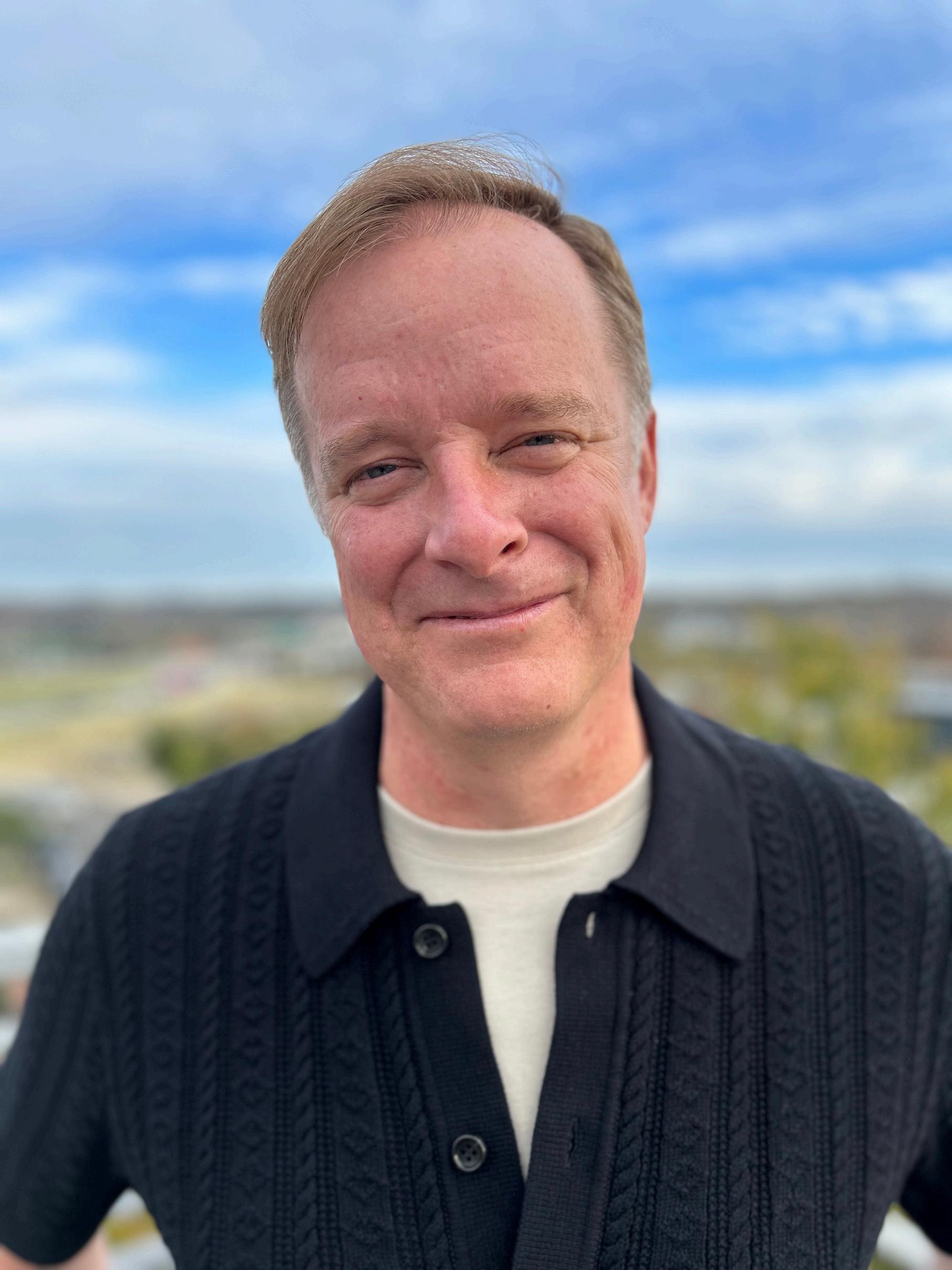
Biographical Directory of the United States Congress
For the institutional audience, his office works on projects like the (a joint project with the Senate Historical Office), which profiles every member who has served since 1789. They also answer reference requests, advise the Capitol Visitor Center about telling the history of Congress, and are responsible for producing the House’s major historical publications.
The general public is served by history.house.gov, which sees seven to eight million visitors each year. The site provides historical information, the House records archive, and curated objects, artifacts, and other material culture of the House. His office also runs an oral history program that has recorded over 500 interviews in the past 20 years about the inner workings of Congress. “I hadn’t had formal training as a historian doing oral histories. The journalism background has certainly helped,” he remarks.
“The liberal arts are invaluable,” says Wasniewski. “You go to college to learn how to be an informed and engaged citizen. That’s what we need. The critical-thinking skills that you get from a broad cross-section of the humanities are with you for life and can apply in almost any context. It’s important to be curious — to question things and want to learn more about them — while moving through your career because it is never a
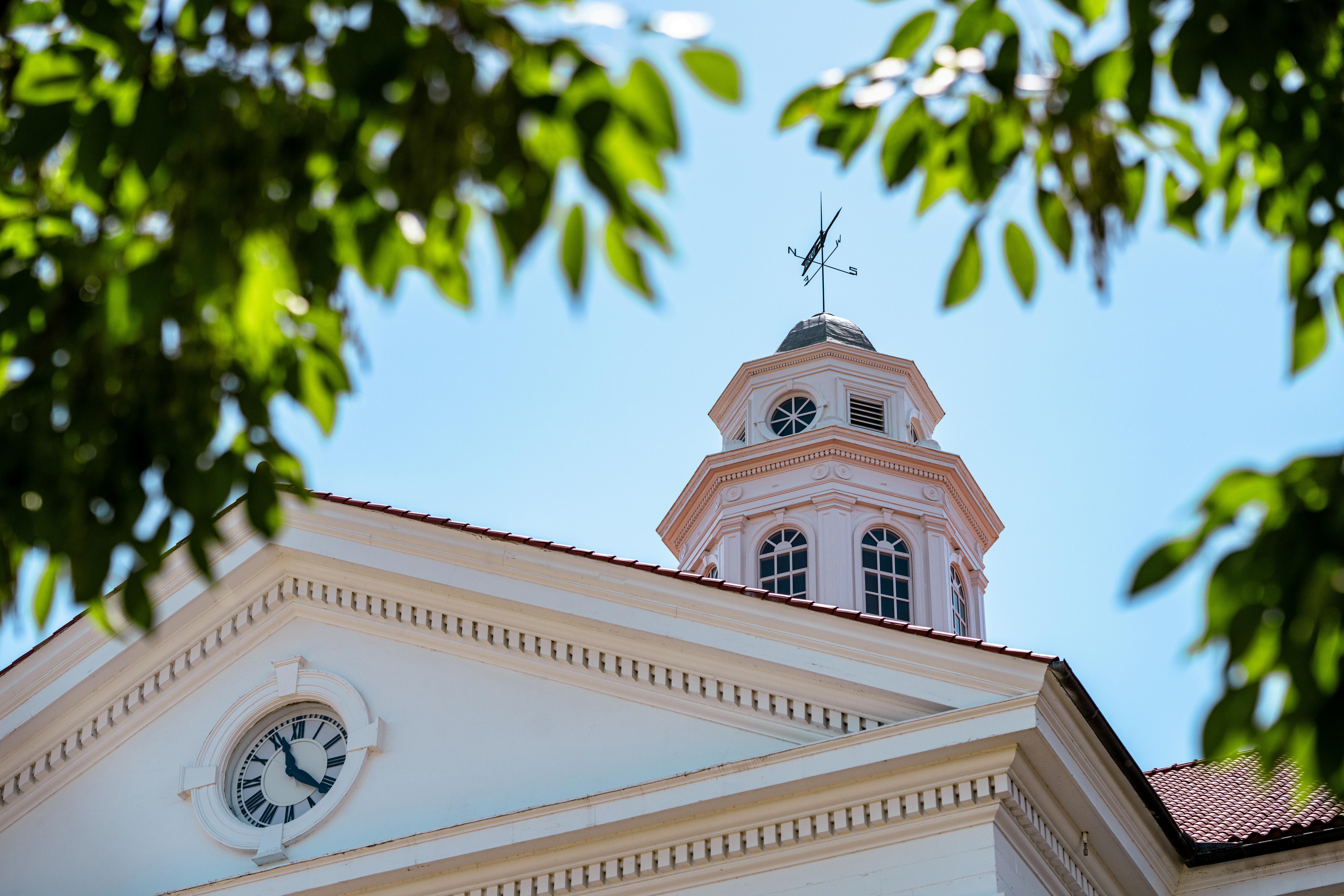
direct path from A to Z. It is winding and wending, and the ability to adapt will benefit you the most.”
Looking back, Wasniewski admits he never imagined he’d become a historian. “If you had asked me back then, I’d have said I wanted to be the next Tom Boswell, a baseball writer,” he says. “But those things I learned at JMU and that really got me hooked and interested — writing, learning about history, communicating, answering reference questions — those are the things that make my job enjoyable, and that make it a really fun job.”
Even with his busy career, Wasniewski stays connected to JMU. He serves on the CAL Alumni Advisory Board, participates in alumni panels, and has helped organize two Capitol Hill Career Treks for students interested in careers in D.C.
“JMU has been so good to me over many years. I want to give back by helping students connect with alumni who are out there and have done it.”
For Wasniewski, flexibility and persistence are key. “Your first job isn’t going to be your ideal or lifelong job, but it can teach you which skills will make you stand out from other candidates and which you can learn and then move on to something else. The liberal arts background will help you navigate those twists, turns and contingencies.”
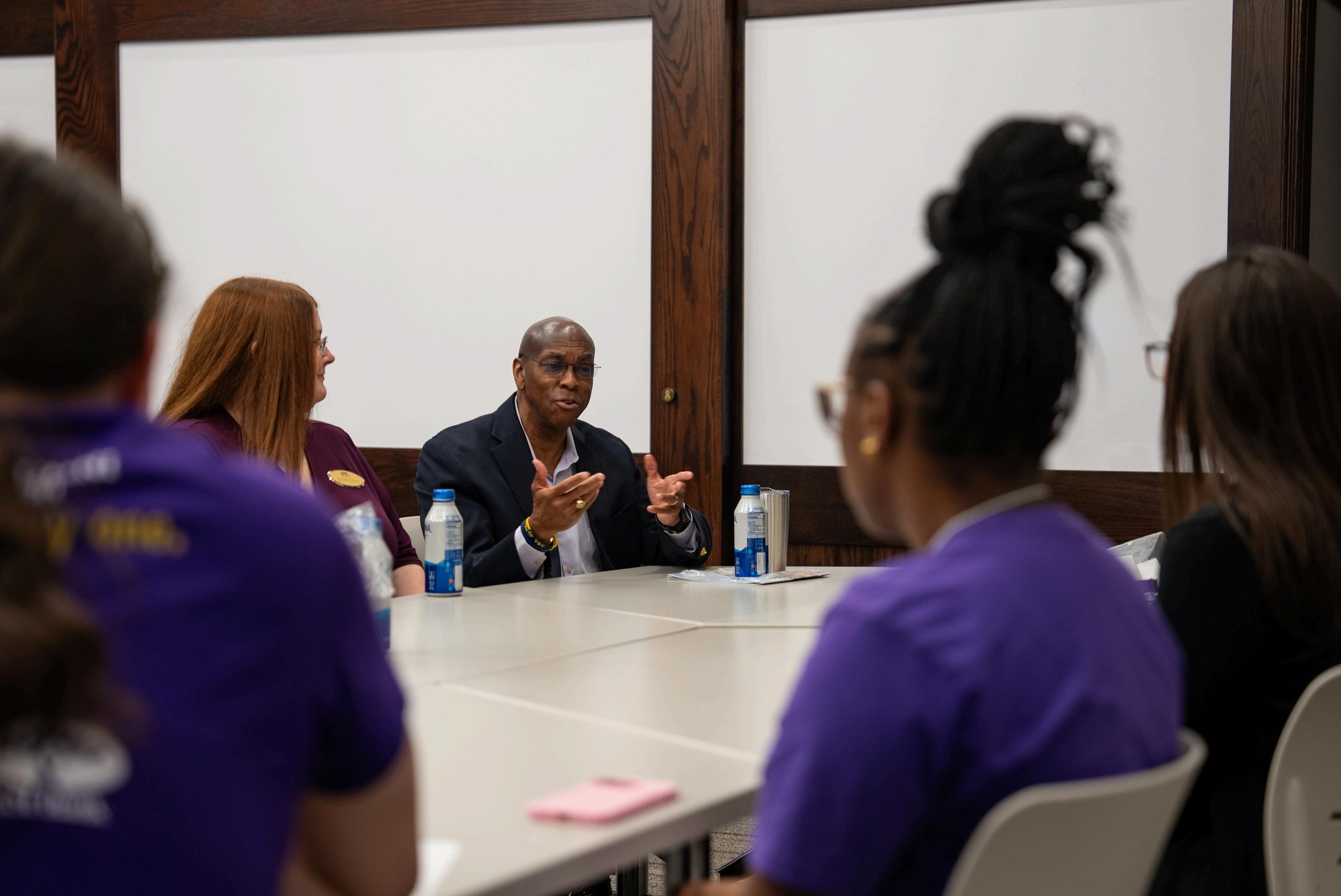
Last November, the College of Arts and Letters Student Advisory Council hosted its first-ever“Day of Development,” bringing students, alumni, and faculty together for an afternoon focused on career readiness and networking. The Council is comprised of students who work closely with Shannon Wilson, Director of Professional Development and Engagement, on professional development initiatives for all CAL students.
Participating students rotated through three interactive stations, each designed to prepare them for life after graduation. At one station, University Career Center staff shared insights on résumés and cover letters as well as tips for using LinkedIn for networking and learning.
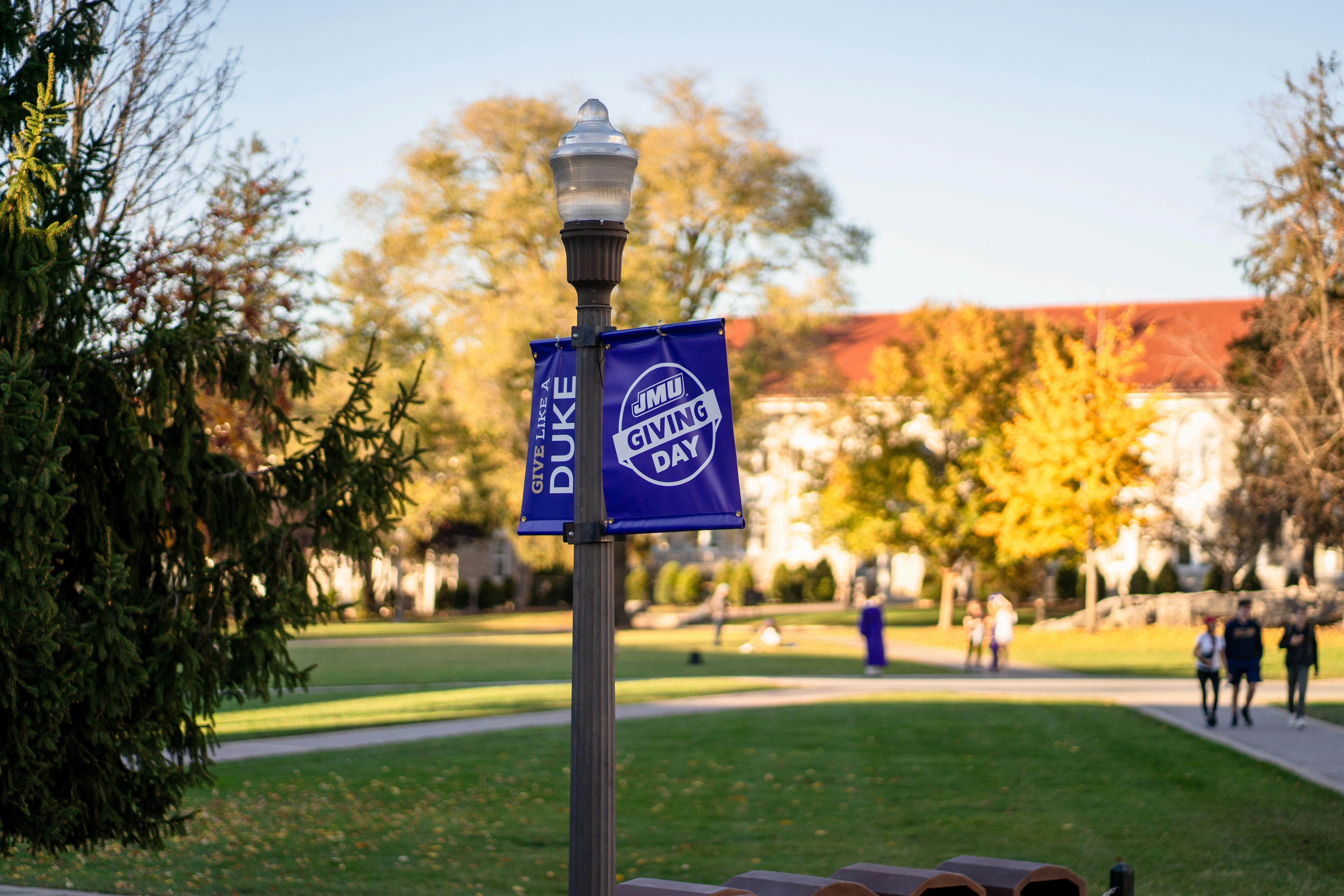
Another let students use the University Career Closet, a donation-based clothing and accessory resource, to explore and select professional attire free of charge.
Students especially enjoyed the alumni station, where alumni discussed topics such as job search strategies, career paths, and industry-specific advice. The day ended with a keynote from Tim Miller, Vice President for Student Affairs, who offered insights into navigating the postgraduation transition.
“The chance to speak directly with alumni and hear their personal career journeys was so inspiring,” one student attendee shared. “It made me feel more confident about my own next steps.”
The Student Advisory Council appreciates the participation of our dedicated alumni volunteers and JMU staff who generously shared their time and expertise. Their guidance left a lasting impression on students, equipping them with practical advice and a deeper understanding of what lies ahead.
The event, which Wilson and the Council plan to hold again, was an excellent example of the College of Arts and Letters' commitment to supporting and empowering students' career readiness and fostering connections within the JMU community.

The College of Arts and Letters is a vibrant, inclusive community devoted to curiosity and discovery Your generosity can significantly impact our students' futures
Together, we can help our students, faculty, and college thrive Join JMU and the College of Arts and Letters on Giving Day to enhance the JMU experience:
Propel academically qualified, underrepresented students, first-generation students and students of modest means into a brighter future
Provide students with essential financial support to experience a potentially life-changing opportunity: a fulltime internship in the nation's capital.
Invest in the future by supporting a wide range of college initiatives and priorities, from scholarships and research to course innovation, student professional development to community engagement, and more
